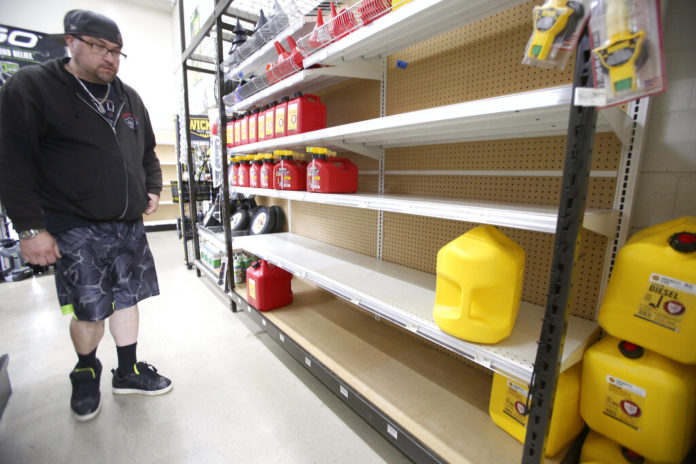
SAN FRANCISCO (AP) — Pacific Gas & Electric turned off electricity Wednesday for about 120,000 people in Northern California to prevent power lines from sparking wildfires during a new bout of windy, warm weather.
The nation’s largest utility lowered the number people affected from 375,000 after rain and humidity reduced the fire threat. About 35,000 others were told they could lose power later Wednesday if the weather doesn’t improve, PG&E spokeswoman Ari Vanrenen said.
Those who lose power were expected to get it back Thursday.
Forecasts called for it to be dry and winds to gust up to 55 mph (89 kph), which could fling tree branches or other debris into power lines, causing sparks that could set catastrophic fires, PG&E officials said. A virtually rainless fall has left brush bone dry.
The blackout is the latest in a series of massive outages by PG&E, including one last month that plunged nearly 2.5 million people into darkness and outraged officials and customers as overkill.
Officials accused the company of using the blackouts as a crutch after years of failing to update its infrastructure to withstand fire weather. PG&E equipment has caused some of California’s most destructive wildfires in recent years.
PG&E CEO Andy Vesey acknowledged the outages have been “terribly disruptive” and said the company is taking steps to avoid them in the future but that for now, “we won’t roll the dice on public safety.”
Meanwhile, California regulators are demanding answers from wireless, internet and landline providers whose equipment failed during the earlier outages, leaving hundreds of thousands of people without a way to get emergency alerts or make 911 calls.
About 3% of cell towers statewide failed at one point in late October, but the numbers were much higher in northern counties, such as Marin, which had 57% of its towers out, and Sonoma, with 27% out.
Some public safety workers had to drive for an hour to see if they needed to check in, said John Kennedy of the Rural County Representatives of California. Fire departments lost contact with fire trucks, and some had to rely on radios because download speeds were so slow or out of service, he said.
More than 450,000 people had communications cut off, the group said.
Exasperated members of the California Public Utilities Commission reminded representatives of Sprint, AT&T, Verizon and other companies that customers pay for reliable service.
“The customers need to know where there’s coverage and where there’s not, and the local responders need to know,” Commissioner Martha Guzman Aceves said.
“Next fire season cannot, cannot look like this one,” commission President Marybel Batjer said.
Consumer advocates have urged the commission to establish backup power requirements and make the companies provide detailed information about outage locations.
State Sen. Steve Glazer and Assemblywoman Rebecca Bauer-Kahan proposed legislation Wednesday that would require cellphone companies to provide at least 72 hours of backup power at cell towers.
Verizon, T-Mobile and AT&T officials said they would disclose outage information immediately but didn’t commit to 72 hours of backup power.
They also criticized PG&E, saying the changing outage forecasts made it difficult to prepare. For example, AT&T deployed 60 generators to the San Francisco Bay Area only to learn that the suburbs were no longer affected, said Jeff Luong, an AT&T vice president.
“It’s impossible to react to that type of situation,” he said.
Lake County Supervisor Moke Simon said AT&T’s network went down right away during an outage in late October, risking sewer and alarm systems. There was no backup, he said.
“That really put us in a dire-straits situation,” he said.
Batjer told the companies she was surprised by their lack of preparation given California’s long history of wildfires.
“It’s sort of stunning that you go, ‘Well, we just learned a lot in the last three weeks,’” she said.
The companies have told the state they communicated with authorities, but the outages were unprecedented. They said they’re improving backup power but that those sources might not be possible in some places and generators aren’t always safe.
Comcast said its network “fundamentally relies on commercial power to operate.”
As reported by Vos Iz Neias
